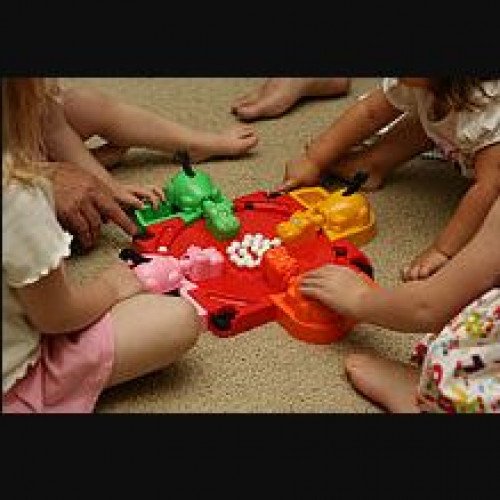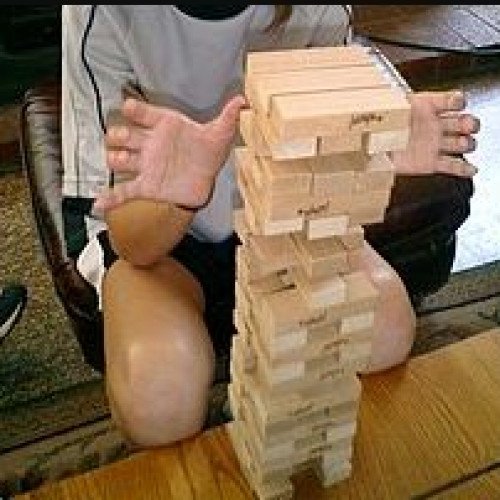"HUNGRY HUNGRY HIPPOS" vs "JENGA"

HUNGRY HUNGRY HIPPOS
Hungry Hungry Hippos (or Hungry Hippos in some UK editions) is a tabletop game made for 2–4 players, produced by Hasbro, under the brand of its subsidiary, Milton Bradley. The idea for the game was published in 1967 by toy inventor Fred Kroll and it was introduced in 1978. The objective of the game is for each player to collect as many marbles as possible with their 'hippo' (a toy hippo model). The game is marketed under the "Elefun and Friends" banner, along with Elefun, Mouse Trap and Gator Golf. The game has been referenced in The Simpsons, Mystery Science Theater 3000, the 2010 Disney/Pixar movie Toy Story 3, the 2017 movie My Little Pony: The Movie, the 2001 cult film Donnie Darko, and the 2020 Netflix series Space Force. There is also a battle level based on the game in the 2016 Micro Machines game. The game board is surrounded by four mechanical, colorful, plastic hippopotamuses operated by levers on their backs. When the lever is pressed, the hippo opens its mouth and extends its head forwards on a telescopic neck. When the lever is released, the head comes down and retracts. Colored plastic marbles are dispensed into the board by each player, and the players repeatedly press the lever on their hippo in order to have it "eat" the marbles, which travel down from under the hippo into a small scoring area for each player. Once all marbles have been captured, the player who has collected the most is the winner.
Statistics for this Xoptio

JENGA
Jenga is a game of physical skill created by British board game designer and author Leslie Scott, and currently marketed by Hasbro. Players take turns removing one block at a time from a tower constructed of 54 blocks. Each block removed is then placed on top of the tower, creating a progressively more unstable structure. Jenga is played with 54 wooden blocks. Each block is three times as long as it is wide, and one fifth as thick as its length – 1.5 cm × 2.5 cm × 7.5 cm (0.59 in × 0.98 in × 2.95 in). Blocks have small, random variations from these dimensions so as to create imperfections in the stacking process and make the game more challenging. To set up the game, the included loading tray is used to stack the initial tower which has eighteen levels of three blocks placed adjacent to one another along their long side and at right angles to the previous level (so, for example, if the blocks in the first level lie lengthwise north–south, the second-level blocks will lie east–west).